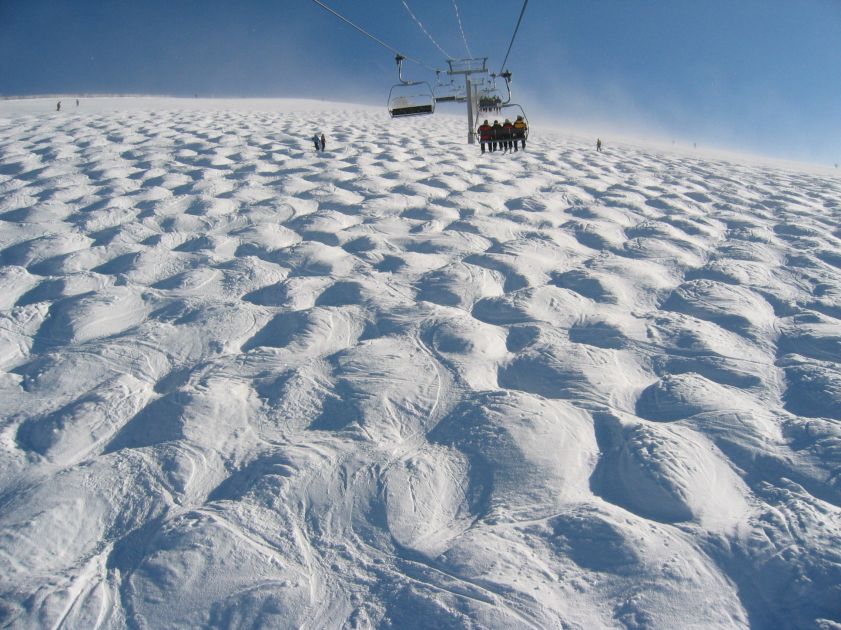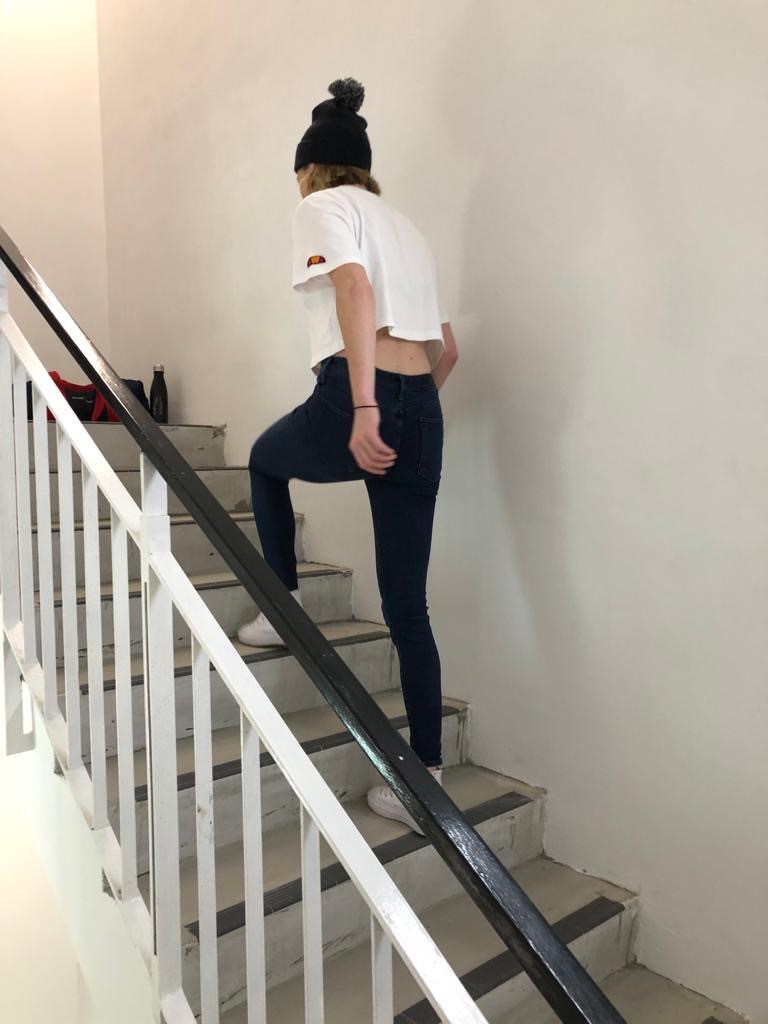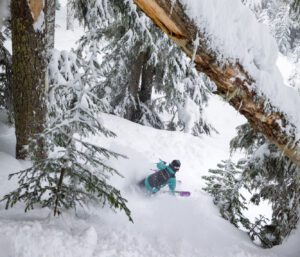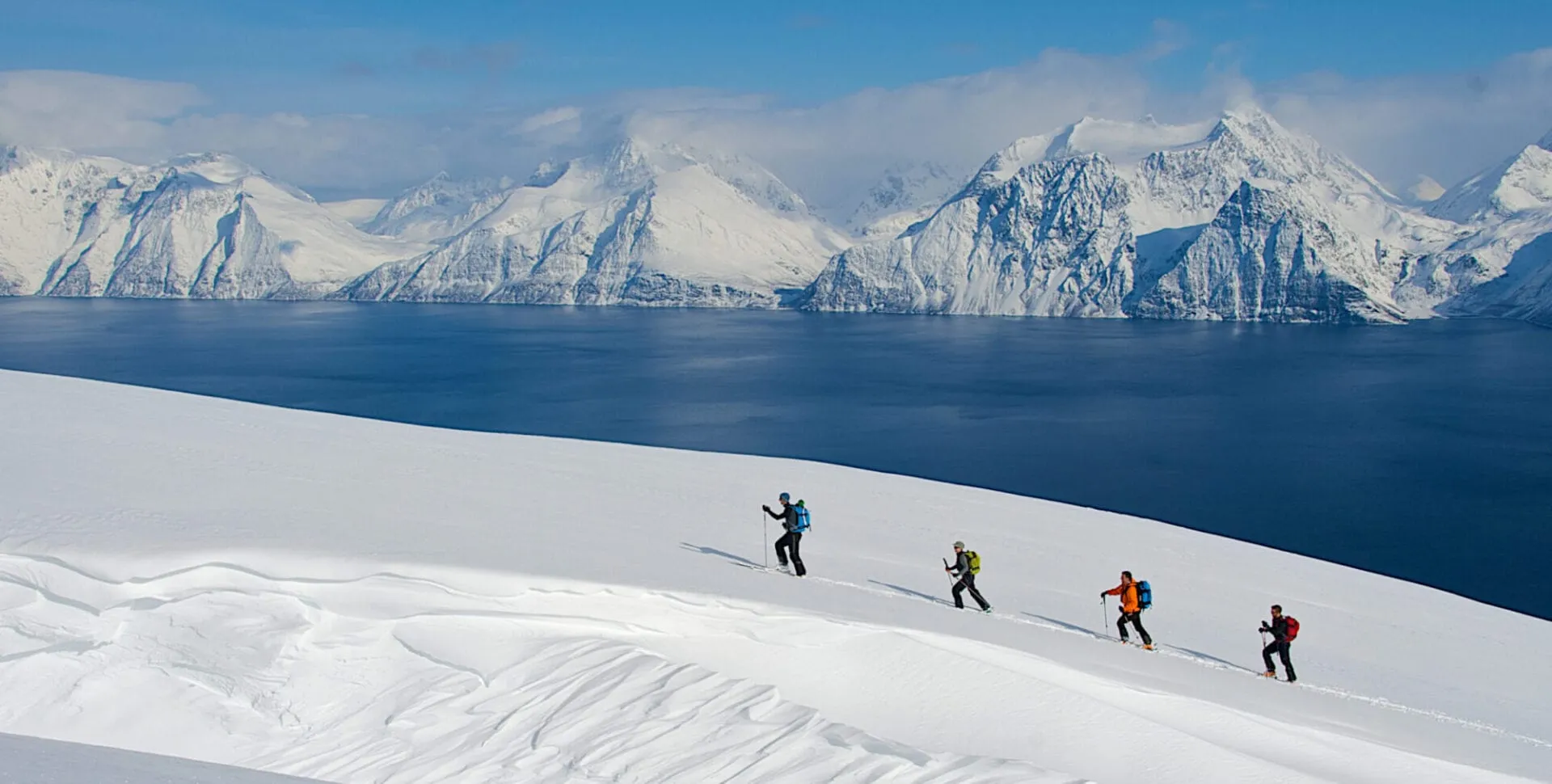How to train for skiing and snowboarding… in layman’s terms.
There are two parts to training for most alpine snowsports: training your aerobic endurance, through things like running or bike riding – and developing your anaerobic endurance, through short bursts of movement specific strength, power and agility exercises. But how does this relate to the act of heading up the mountain and shredding pow all day?
Anaerobic endurance in snowsports
Put simply, when we are making turns our body is performing short sharp explosive movements powered mostly by the anaerobic system. The intensity is high and the time interval is short so the body has not been able to deliver sufficient levels of oxygen to the muscles, which is why we feel lactic acid at the bottom of each run.
Aerobic endurance in snowsports
The aerobic system is powering the body during longer less intensive exercise when muscles are receiving sufficient oxygen for performance, hence the absence of lactic acid. But here’s the thing to understand about how it plays out in snowsports: even though the aerobic system is not the dominant energy system at play while we are physically skiing down the hill, it is responsible for recovering the body after each run. Given we usually spend more of our time on the chairlift or resting during a ski day, the aerobic system is vitally important and considered a dominant energy system to train in the lead up to your trip.
How does this apply to backcountry ski touring?
The work-to-rest ratio for backcountry skiing or split-boarding is uniquely different from resort-based riding. There are long periods of intense hiking involved, anything from 15 to 60 minutes without a break, but you are still being powered by the aerobic system without feeling lactic acid accumulate like you do when you’re sprinting or skiing moguls. Your legs do get tired, but not through anaerobic exertion and immediate lactic acid build-up, but because we are hiking at a higher level of aerobic output, therefore, using a lot more energy which is why we get to crush the carbs all day to keep going… yay!
The need for solid cardiovascular training is even greater for backcountry touring as we spend a minimal amount of time skiing down the mountain powdered by the anaerobic system. So focus your efforts on long sessions out in nature hiking with a weighted backpack, mountain biking, running or simply hitting the stairs in the tallest building you can find.
This means if you are doing the 4 Volcanoes in 4 Days challenge from 24 – 29 February, you still have plenty of time to train. Make sure you get in some long hours of cardio where possible and follow the program I have outlined below once (or twice a week) to dial in your agility and core strength for the descent. I touched on this is in a previous article – check out the section on physical training for some more details about training aerobic endurance for backcountry hiking.
Only one month to go. Should I weight train for my ski holiday?
Presuming you understand all the ‘scary complicated sports nerd jargon’ above, all you need to consider in a late training approach is that it’s best to focus on ski and snowboard movement specific exercises while maintaining or your aerobic capacity with a good level of cardiovascular exercise (biking, running, swimming, hiking). If you’ve left your training to one month before, tackling a program of heavy lifting to increase muscular strength may not be the most effective approach.
Movement specific exercises for skiing and snowboarding
Now that you understand the basics on how to train for snowsports, I’m going to share some of my favourite ski and snowboard specific exercises with you, so you can capitalise on whatever anaerobic strength and aerobic capacity you currently have to get the most out of your days on the snow.
Before you start, make sure you warm-up with 5-10 mins of cardio followed by some joint mobility and stretching exercises. Focus on hips, ankles and knees.
Alternating leg lunges
-
Step forward and drop the back knee until it touches the ground.
-
The back femur should be vertical
-
Stand up, step back and swap sides
-
10 – 20 on each leg x 3 sets
-
To add intensity, challenge yourself with plyo lunges (switching legs by jumping)
Step-ups
This is a great exercise for ski touring or split boarding that uses a set of stairs, a sturdy box or a platform just under your knee height to simulate the repetitive stepping up involved for hiking.
-
Keeping the hips level, step up and down one foot at a time
-
Add weight in a backpack once your form is solid
-
If using stairs, hike up two stairs at a time
“Bird Feeder” aka Single Leg Deadlifts
This is a great single-leg exercise that helps you develop balance and single-leg proprioception while waking up your glutes… and we all need stronger glutes for skiing.
-
Stand upright on one leg
-
Keep your unweighted leg in line with the rest of your body as you break at the waist and bend down until your body and leg are horizontal
-
Keep lowering your head and lifting your unweighted leg up behind you as far as your range of motion will allow until you touch the ground with your hand
-
Stand back up and lift the unweighted knee up to horizontal in front of you
-
Repeat on the same leg until all reps are done
-
Add a weight plate or heavy object to increase intensity
-
10-15 per leg x 6 sets
Side-to-side jumps
This is another iconic plyometric ski exercise that mimics the muscular action used for skiing short turns, moguls and powder. It is probably less specific to snowboarding but still a great exercise to develop general agility and coordination.
-
Place an object on the ground to jump over; choose something soft and safe in case you fall! Pillows, a yoga mat, backpack, etc.
-
Explosively jump from side to side over the object on the ground
-
Try to shorten the amount of time your feet stay connected to the ground before your feet blast into the next repetition
-
10 – 20 jumps on each side x 6 sets
Squat jumps / squat tuck jumps
This exercise combines a regular unweighted air squat with a dynamic plyometric jump to mimic the lengthening and shortening of your legs when you ski pow, moguls, short and long turns.
-
Stand with your legs shoulder width apart
-
Keep your back long and push your hips back and down and sit into a full squat
-
Extend powerfully to jump off the ground as high as possible
-
Land and lower immediately into the next rep
-
Start with 10 jumps x 6 sets – work your way up to 15-20 jumps x 8 sets
-
To increase the intensity, add a tuck movement after you jump, lifting your legs up underneath you then extending them to land.
Russian twists
This is a core exercise that is really good for skiing or boarding as it helps develop the core strength needed to stop upper body rotation during turns.
-
Find a heavy object like a kettlebell or bag filled with heavy objects
-
Sit on the ground with your legs outstretched, feet off the ground
-
Balancing on your sit bones; rotate your upper body leading with your head and shoulders until you can tap the weight on the ground next to your body
-
Repeat to the other side
-
30-60 seconds x 6 set
Plank
-
Create a plank by supporting your body weight either on your hands or your elbows (if your wrists cannot support the weight)
-
Hold your core in tight to prevent sagging by drawing your belly button up and in towards your spine
-
Make sure either your hands or elbows are directly under your shoulders
-
Work your way up from 30 seconds to 2 minutes
Good luck with your training, and let us know if you have any questions or need any other tips on how to improve your snowsports fitness.
Stay tuned for our upcoming blog on ‘How to ski powder like a pro’…
(Thank you Nickie Mabey for providing the demonstrations in 32-degree heat in jeans and a beanie!)

















